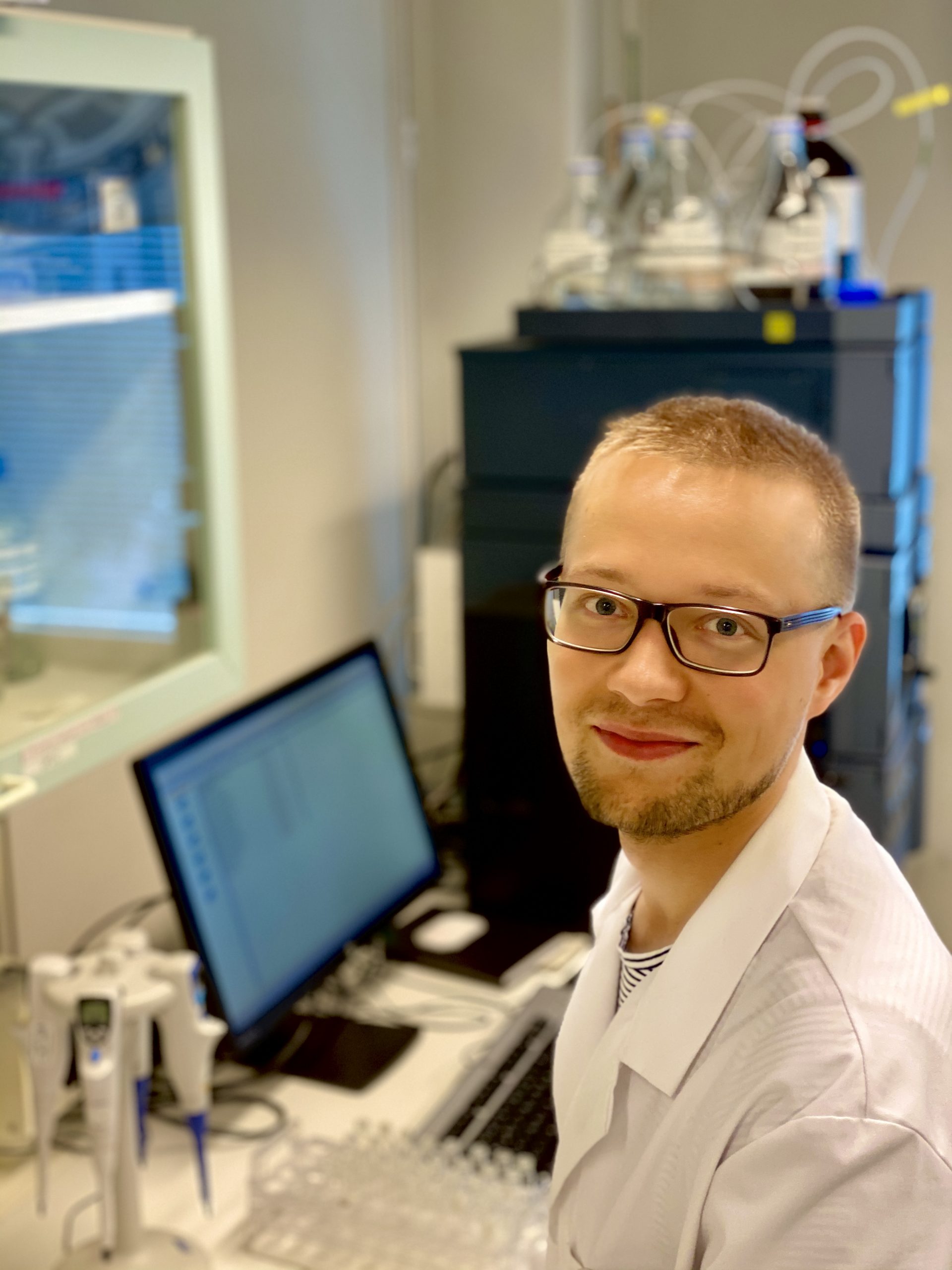PhD thesis topic
Novel mass spectrometric tools reveal new fundamental polyphenolic patterns in red wines
Main aims
(1) Development of mass spectrometric tools for the analysis of unique polyphenolic compounds in red wines. Main emphasis will be on the oligomeric adducts consisting of proanthocyanidins and anthocyanins.
(2) Analysis of over 300 commercial red wines with the developed method. The aim is to discover new fundamental features in quantitative and qualitative composition of the oligomeric adducts.
(3) To link the composition of proanthocyanidins and oligomeric adducts to sensorial properties of the red wines, such as color intensity and tannicity, using statistical modelling.
(4) To prepare and study the bioactivities of new types of oligomeric procyanidin analogues, which are to be hemi-synthesized by utilizing the same chemical reactivity of that leads to the formation of the oligomeric adducts.
Motivation
Often in red wine analytics, only the most abundant individual pigments are analyzed from wines. The most abundant pigments are already great in number but usually the truly complex part of the pigment composition in wines, namely the oligomeric adducts of proanthocyanidins and anthocyanins, is mostly omitted. The oligomeric adducts exist in wines as mixtures of oligomers and polymers, yet only small dimers are analyzed in most cases while the rest of the higher oligomers are overlooked. Analytical difficulties related to the oligomeric adducts have been hindering the progress in red wine chemistry for decades and, evidently, a fresh point of view and new and clever analytical methods are needed to make new breakthroughs. Personally, this PhD project is my journey to become a versatile and adept scientist who can handle and carry out research from the outset, and throughout.
Results so far
An UPLC–MS/MS method was successfully developed for the rapid detection of 18 different groups of anthocyanidin‑derived pigments in the form of two-dimensional (2D) chromatographic fingerprints. Three of these groups were oligomeric adducts consisting of malvidin glycosides and proanthocyanidins. 317 commercial red wines were analyzed with the developed method, along with the Engström method, which was used to quantify proanthocyanidins and several other common polyphenolic compound groups in wines. A new data-analytical protocol was developed to summarize and visualize the vast 2D chromatographic data, and the protocol showed how there was typically only little qualitative variation in the composition of the oligomeric adducts in red wines. However, clear evolutionary patterns were observed in the composition and typically the average sizes of the adducts increased as wines aged. The concentrations of the monomeric carboxypyranomalvidins and the oligomeric pigments were found to explain most of the variation in the color intensity in the 317 red wines. However, the sizes of the oligomeric pigments explained an important and distinctive part of the color intensity that could not be explained by the concentrations. The proanthocyanidin and proanthocyanidin adduct composition was shown to accurately predict the perceived tannicities of the wines. Finally, a synthesis and purification protocol was developed for the synthesis of ten aldehyde-linked dimers of (+)-catechin and (−)-epicatechin.

Doctoral candidate
Email: juuso.e.laitila(at)utu.fi
Postal address:
University of Turku
Department of Chemistry
Vatselankatu 2
FI-20500 Turku
Finland
